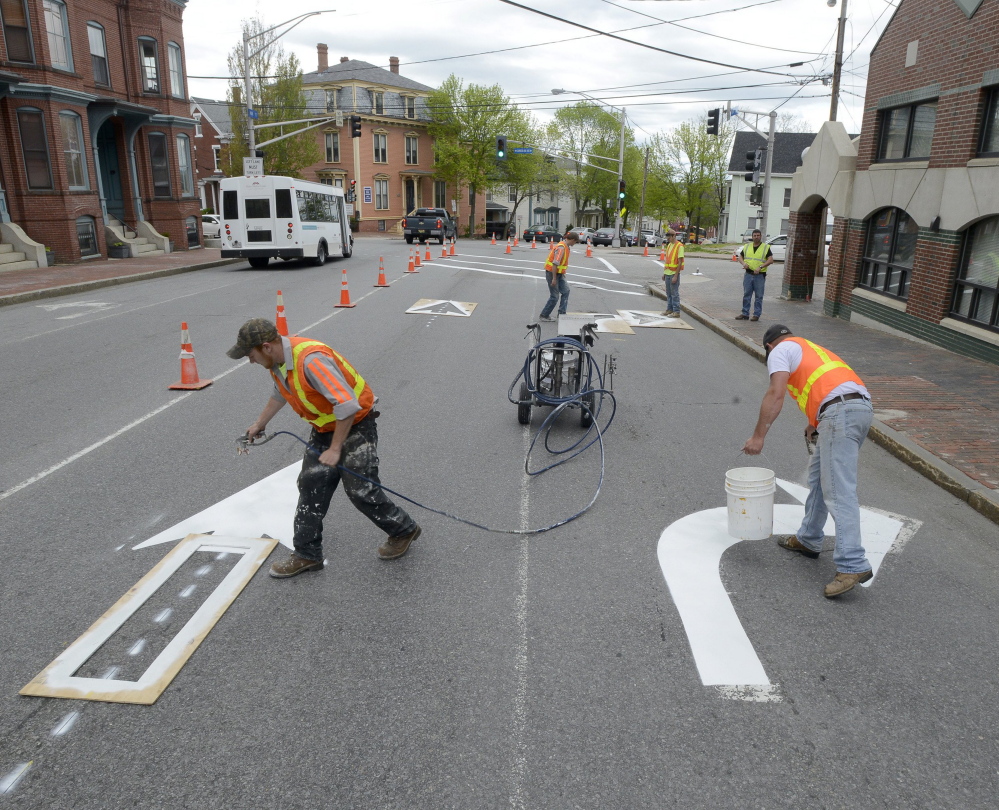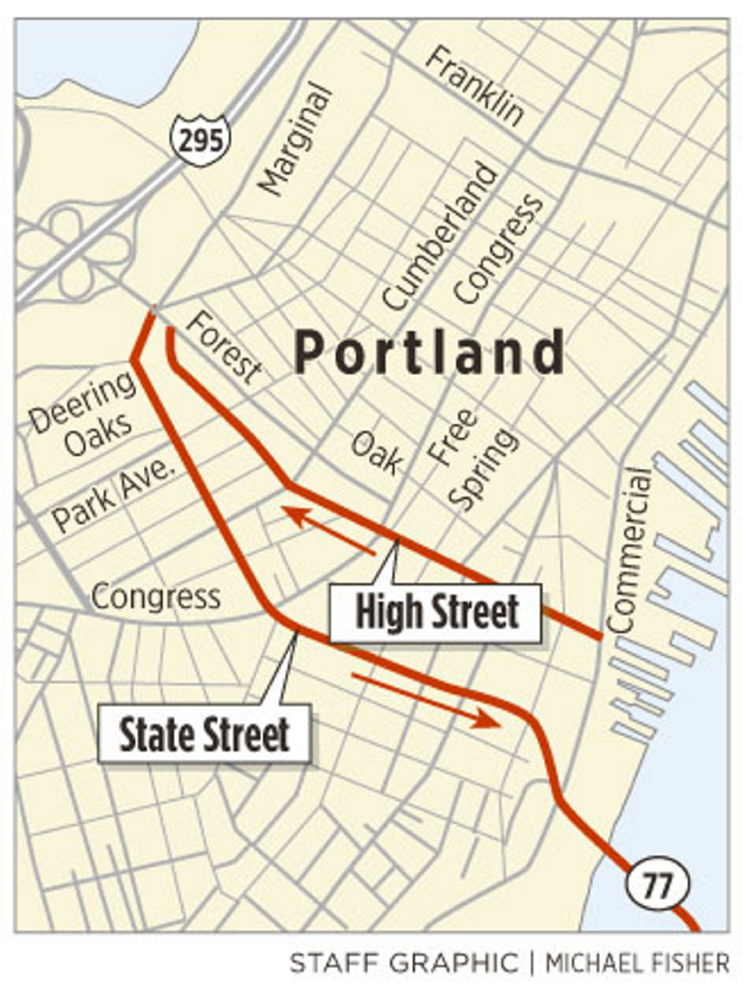Some city councilors, as well as Portland’s new city manager, have expressed reservations ahead of a scheduled vote Monday on whether to take the next steps to convert two major thoroughfares on the western half of the Portland peninsula into two-way streets.
An affirmative vote means the city would accept a feasibility study on converting State and High streets and would authorize the next steps – a more thorough evaluation of the public safety impact and a further refinement of how much the project would cost.
But one councilor says he’s not sure it makes sense to move the study forward if the project has no dedicated funding currently and little likelihood of being funded in the near future.
Edward Suslovic, a member of the finance committee, said he plans to refer the matter to that committee, which would effectively put the brakes on any plans indefinitely.
If that can’t happen, Suslovic said he can’t see accepting the study.
“I’m not saying I’m against the concept,” he said. “It’s just not ready for prime time.”
Councilor Jon Hinck, who initially was skeptical of the plan, said he’s come to believe that it would be a good idea and plans to vote in favor.
City Councilor David Marshall, who represents the district that includes both streets, also is in favor and said he’s confident lingering concerns can be overcome.
“There has been a lot of staff turnover at City Hall; I think it’s obvious there hasn’t been enough dialogue for some people,” he said.
City Manager Jon Jennings, who was not on the job during past discussions, voiced some of those concerns recently – specifically the impact on public safety and whether the projected cost of $3.2 million is realistic.
Jennings was on vacation last week, but city spokeswoman Jessica Grondin said the manager was concerned that voting to accept the study is a signal to the public that the project is definitely going to get done. Jennings, she said, is still hoping for more information.
Hinck said he understands if Jennings wants to have a role in such a big decision for the city, but said accepting the study will ensure everyone gets more information.
“I would like to feel assured that he has gotten the benefit of all the research and examination,” Hinck said.
Hinck also acknowledged that Monday’s vote effectively forces city councilors to make a decision on where they stand.
Suslovic had the same concerns as Jennings about whether the project could reasonably be funded. He said as the city looks at its 10-year capital budget, there is not a lot of extra money available for projects, particularly projects that are discretionary.
“I would characterize (converting State and High streets) as discretionary,” he said. “It’s not something we need to do. And if that’s the case, why would we move it forward?”
Marshall and Hinck, though, said there could be tremendous value in restoring those streets to their original traffic patterns. And, they said, there could be an opportunity for state or federal funding to defray costs.
“$3.2 million in the context of roadway improvement, that’s pretty modest,” Marshall said. “I think the cost will be outweighed by improved pedestrian and bike safety and quality of life for residents.”
High Street runs one-way from Commercial Street to Forest Avenue. State Street runs in the opposite direction, from Forest to the start of the Casco Bay Bridge. Both were converted into one-way streets in 1972 and have been popular routes for commuters traveling through the city.
The idea of converting them back has been around for years but got a boost in 2013, when West End residents convinced councilors to commission a feasibility study.
That study, conducted by TY Lin International, outlined the pros and cons. It would improve safety for pedestrians, bicyclists and motorists but also would slightly increase travel time across the downtown peninsula, potentially increase the risk of low-speed traffic accidents at realigned intersections and eliminate about 30 parking spaces.
The study also included a list of communities across the country that have completed similar conversions.
In most cases, the changes were positive for both businesses and residential property owners.
A city advisory committee voted this past spring to approve the changes, but that was only a recommendation. The final vote rests with the council.
Suslovic said he couldn’t predict what the vote might be Monday. But he said things could change the next week. That’s when three new councilors, including a new mayor, are sworn in.
Send questions/comments to the editors.





Success. Please wait for the page to reload. If the page does not reload within 5 seconds, please refresh the page.
Enter your email and password to access comments.
Hi, to comment on stories you must . This profile is in addition to your subscription and website login.
Already have a commenting profile? .
Invalid username/password.
Please check your email to confirm and complete your registration.
Only subscribers are eligible to post comments. Please subscribe or login first for digital access. Here’s why.
Use the form below to reset your password. When you've submitted your account email, we will send an email with a reset code.